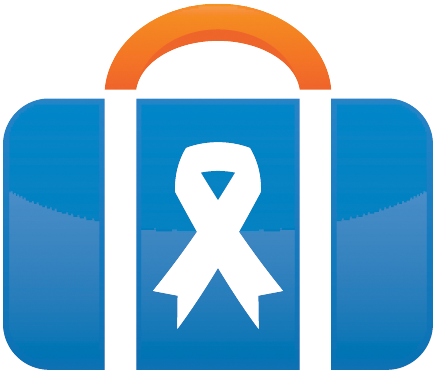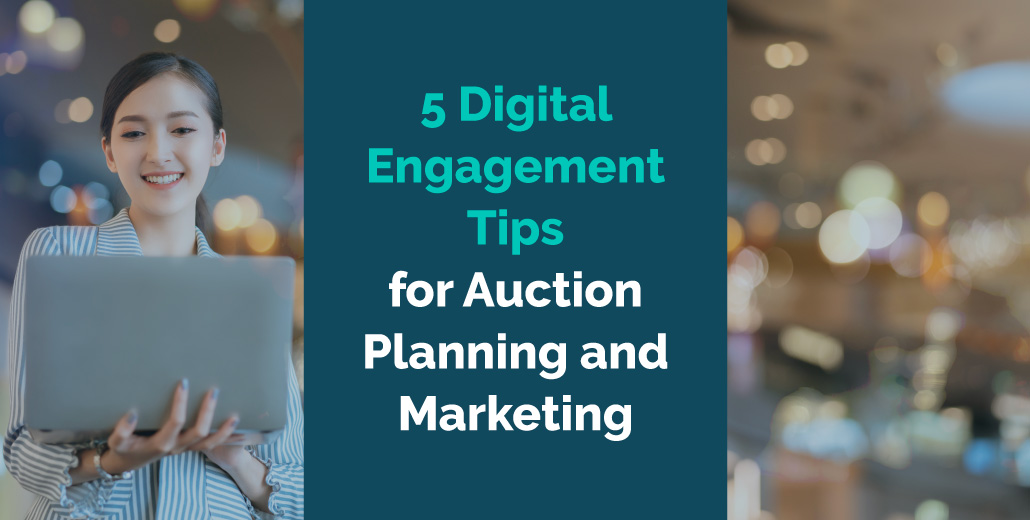Auctions are fun, high-energy events that can help your nonprofit bring in donations and engage its supporters, whether they’re hosted in person, online, or somewhere in between.
But there’s a lot that goes into planning and running a successful auction, from procuring auction items that your supporters will want to bid on and securing event sponsorships to ensuring everyone’s having a great time on the day of.
To boost your nonprofit’s auction planning and marketing efforts, this article will cover how you can use your website and auction software to engage your supporters before, during, and after your event.
As you learn to harness the power of your digital tools, you’ll improve your team’s efficiency, attract more supporters, and improve your auction attendees’ experience. Let’s get started.
1. Set up an engaging website landing page or microsite.
Your auction will only be as successful as your efforts to get people to attend it. And it all starts with getting the word out about your auction on your website. You’ll typically have two options for doing this:
- Create a landing page for the auction. A landing page is a single page on your main website dedicated to a specific topic or event, like your auction. A landing page is a great choice if your auction is a smaller, one-off event.
- Create an auction microsite. Microsites are websites created with a variation of your main website’s domain, focused on a specific topic. Microsites let your nonprofit market content that’s highly focused on one topic without cluttering your main website, which means they’re great tools for larger or recurring events. Note that building out a microsite will be a bit more involved than setting up a landing page.
Whether your organization decides to go with a landing page or a microsite, you’ll still need to follow web design best practices to ensure it’s the best marketing tool for your auction that it can be. Here are some best practices to follow:
- Prioritize a great user experience (UX). According to Cornershop Creative, this means your landing page or microsite should be easy to navigate, visually interesting, and accessible to people of all abilities.
- Provide all the information attendees need about your auction. Include all of the event’s logistical details, like the date and time, parking information, and dress code. You can also include an auction catalog supporters can browse ahead of time to get excited about bidding and a page that recognizes your sponsors.
- Ensure the look is consistent with your nonprofit’s brand. Visual elements that don’t match your nonprofit’s brand may cause your visitor to question the page or auction’s legitimacy. Keep everything consistent between your main website pages and your auction pages so that people can clearly see the connection between the two.
To make sure that your microsite or landing page visitors are registering for your auction, you’ll want to include a streamlined registration form (more on this later). Direct your visitors’ attention to this form by creating plenty of calls-to-action (CTAs) that encourage them to register for the event.
2. Create valuable content about the auction.
To build excitement about your auction as it gets closer, continue to promote it by consistently creating valuable and engaging content about the event. There are many ways to do this, and you should use communication channels that your supporters are used to, like email and your social media platforms, to ensure that you’re creating content that resonates with them.
Consider the type of content you’ll create by reviewing these options:
- Blog posts. The beauty of a blog post is that you can dive deep into one topic. When it comes to writing about your auction, you might want to create blog posts about your most unique auction items, bidding tips or strategies, or even the impact past auctions (or similar events) have had on your beneficiaries. If you want to play the long game with your marketing strategy, you can even optimize your posts for search engines so they’re more visible when people search for terms related to your auction or organization. This will be most useful to organizations that host large, recurring auction events.
- Social media posts. Share pictures, videos, or status updates about your auction on the social media platforms that your supporters frequent. You might post reminders about your auction registration deadline, tease surprise auction items, or share photos or videos from past auctions.
- Email streams. Design a series of emails that promote your auction, with each message building on the last. For best results, segment your supporters by shared characteristics (donor status, age, location, etc.) and tailor your email streams accordingly. You should also add clear CTAs to encourage more registrations.
No matter what sort of content you decide to create about your auction, strive to make it interesting, informative, and inspiring. The goal of each asset you create should be to encourage someone to take action, whether that’s signing up for your auction or sharing your registration form with a friend!
3. Offer a seamless registration process.
After guests view your marketing materials and decide they’re interested in attending your auction, they’ll navigate to your event landing page or microsite. From there, you should ensure every step toward completing registration is as smooth and easy as possible.
Small design elements on your landing page and registration form can influence whether or not guests sign up for your event. Set up Google Analytics for your website to monitor key performance indicators to see how guests interact with your page or microsite, allowing you to identify steps in the process where they might drop off. A few common problems that can cause reduced engagement are:
- Non-branded forms. Navigating guests away from your website can make them unsure of who they are giving their information to, which can result in abandoned registration forms. Ensure that every part of your registration process features key brand elements, such as your logo, to create a consistent and secure experience for your attendees.
- Lengthy registration forms. Limit all forms to only the most necessary questions for your event. While it can be tempting to gather as much information about your guests as possible, too many questions, especially ones that seem tangential to your event, can lead to frustration—and fewer guests at your auction.
- Unclear registration processes. Make navigating to your registration form as easy as possible. Remember that event pages and microsites have two primary objectives: informing guests about your event and encouraging supporters to sign up. Consider including your registration form at the top of your landing page, or, if you decide to build a microsite for your event, a “Register Now” button on every page of your event’s website.
After creating your registration forms, make sure they’re accessible. A few common accessibility problems on forms include necessary fields having only one visual indicator and textual directions only appearing within the information fields themselves (and subsequently disappearing once guests start typing). Accounting for these problems will allow your auction to reach the largest audience possible.
Additionally, your nonprofit can use your registration process to boost engagement and conversions. Offer guests tiered ticket packages or VIP options, providing more options for how they can participate in your auction.
4. Leverage auction software during the event.
Auctions are complex fundraisers that require your team to track item procurement and shipping in addition to other fundraising responsibilities such as registrations, donations, and volunteers. While your nonprofit should keep an eye on its fundraisers’ costs to ensure you don’t go over budget, investing in auction software can improve the event experience for your guests and your team.
Auction software comes with a variety of benefits that help streamline in-person, hybrid, and online auctions. Here are a few features to look for in your auction software solution:
- Mobile bidding. Bidding apps let guests stay up to date on their bids, no matter where they are. Mobile bidding is a key component of online and hybrid auctions, especially if they take place over several days. Mobile bidding can also be used at in-person auctions, letting guests quickly bid on items while participating in other parts of your event.
- In-app checkout. In-app checkout is a must for online auctions, enabling bidders to immediately claim items they win at the end of the event. Mobile checkout processes can also benefit in-person events by letting guests check out from their phones and avoid long lines.
- Reporting tools. Your auctions will produce a lot of data about both your supporters and sponsors. Find an auction software that can track bids in real time, allowing your nonprofit to identify highly sought items to help fuel bidding wars and attract attention to items that have few or no bids. After your auction you can then track which items were the most successful relative to their market value, providing guidance for your procurement team for your next auction.
Auctions software can be a big investment, so be sure to research your options, compare solutions, and request demos before making any purchases.
5. Prioritize follow-up tasks.
Your auction isn’t finished until you’ve checked “follow up” off of your checklist. Remember that auction and event software makes this easy for you by tracking key data points, including the name of every guest to thank for attending.
Don’t be afraid to try a thank-you method that’s out of the box when thanking your attendees. In the donor recognition guide from NXUnite by Nexus Marketing, it’s recommended that nonprofits try sending eCards to their donors. eCards are convenient and affordable to create, customizable, and unique.
In addition to thanking guests, don’t forget to reach out to sponsors after your auction and thank them for their contributions. Auctions allow your nonprofit to connect with supporters, but they’re also an opportunity to forge professional relationships between your nonprofit and local businesses, who might be open to sponsoring future events.
Hosting a successful auction starts with successful planning and marketing. Your auction’s planning team can position your event for success by using auction software to stay organized and present guests with seamless interactions. Additionally, creative marketing, especially on your website, can help you stand out from the crowd to get more people to attend your event. You’ve got this!




